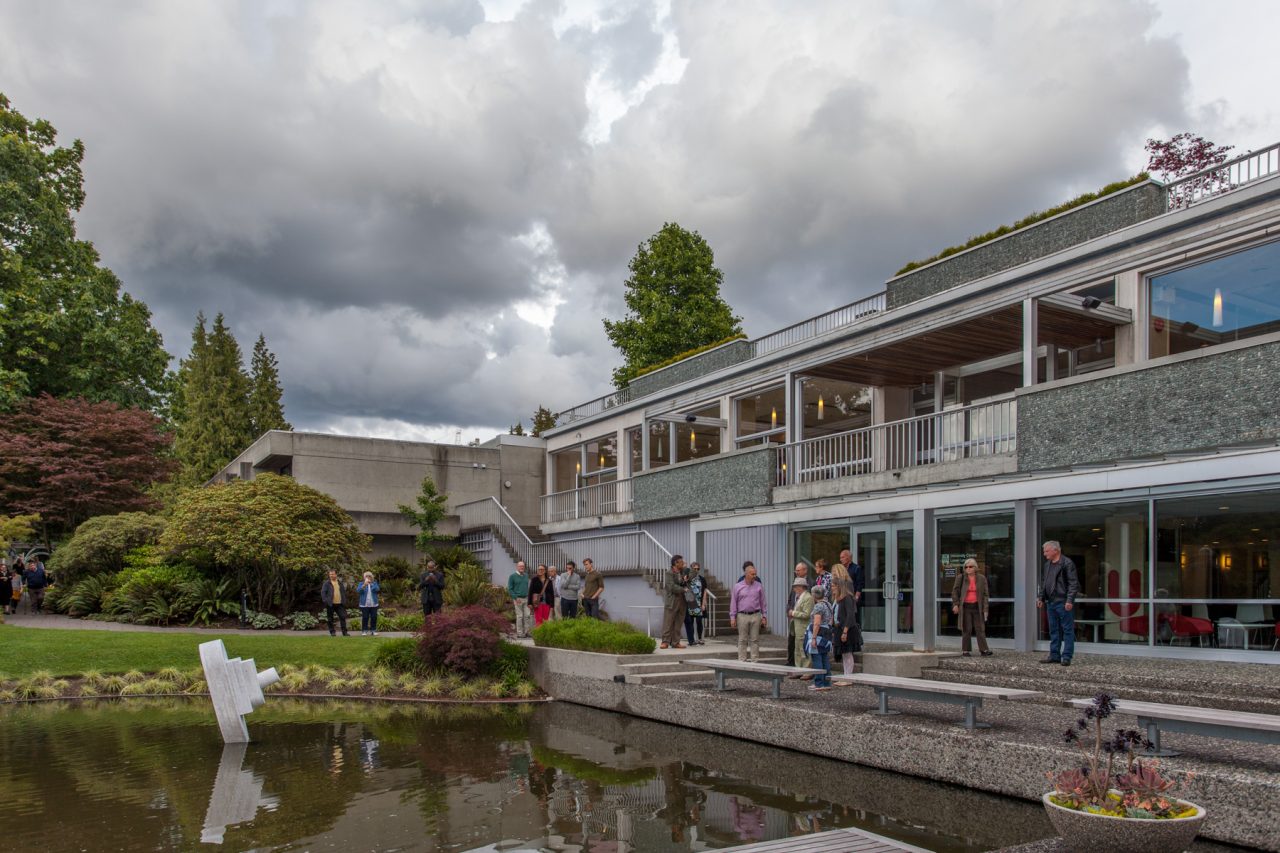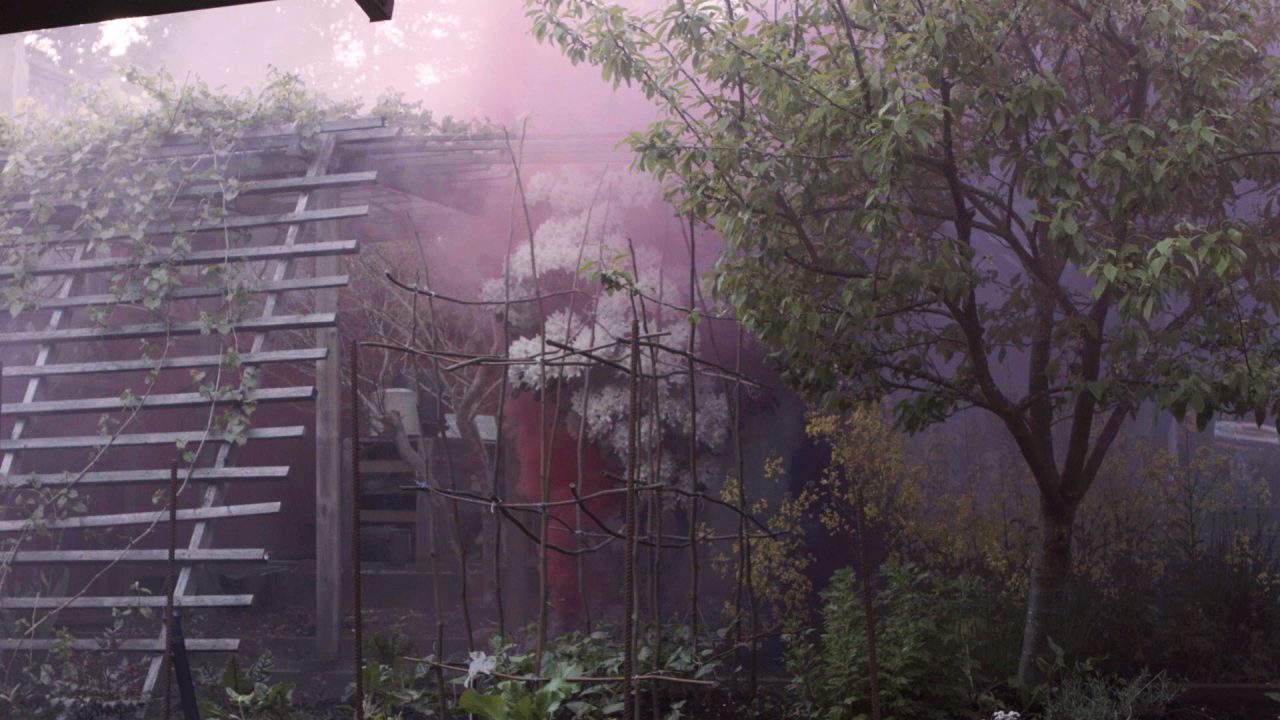9 Jan – 30 Apr 2025
Belkin Outdoor Screen
Outdoor Screen: Glenn Lewis
-
Glenn Lewis
Glenn Lewis (Canadian, b. 1935) is a contemporary conceptual artist based in Vancouver. Lewis became a central figure within Vancouver’s prolific avant-garde art scene of the late 1960s. Initially trained in ceramics, his practice expanded to include photography, sculpture, performance and video, and is often grounded in collaborative projects or approaches. Lewis’s work questions the dualities of the social and the natural, the conventional and the mythical, as well as the static and the transient, often ironically. In 1967, Lewis was prominent in Intermedia, a loose collective of artists, musicians, dancers, architects, engineers and educators who came together to explore new forms of artistic expression and equipment, influenced in part by the ideas of Marshall McLuhan, Buckminster Fuller, the back-to-the-land movement, performance and conceptual art. Lewis was first inspired to take up performance art himself after attending workshops with choreographers and dancers Deborah Hay and Steve Paxton at the Vancouver Art Gallery in 1968, and the following year participating in a performance tour with his piece Canadian Pacific and Yvonne Rainer’s Rose Fractions. Lewis received a degree from the Vancouver School of Art in 1958 (now Emily Carr University) and later a teaching degree from the University of British Columbia. He went on to study ceramics under artist and potter Bernard Leach at St. Ives in Cornwall, England from 1961 to 1963. Upon returning to Vancouver, Lewis became involved in numerous artists’ collectives and artist-run centres, including Intermedia (1967) and the New Era Social Club (1968). In 1973, he co-founded the Western Front Society with Martin Bartlett, Mo van Nostrand, Kate Craig, Henry Greenhow, Eric Metcalfe, Michael Morris and Vincent Trasov. As an educator, arts administrator and arts programmer, Lewis has curated numerous exhibitions and programs, including the Performance Art Program at the Western Front (1977-79), the Exhibition Program at the Western Front (1986-87) and the Western Front Historical Exhibition at the Künstlerhaus Stuttgart, Germany (1983). Lewis has served on numerous boards and councils, including the Vancouver Art Gallery Board of Directors and the Western Front Board of Directors. His work has been exhibited extensively across Canada and abroad.
Read More
Blue Tape Around a City Block, 1969
9 m 51 s
16 mm film converted to digital
Forest Industry, 1970
2 h 6 m
16 mm film converted to digital
From 9 January until 30 April 2025, the Belkin’s outdoor screen will show Glenn Lewis’s films Blue Tape Around a City Block (1969) and Forest Industry (1970) daily between 9 am and 9 pm. See below for screening times.
Lewis’s two early experimental films Blue Tape Around a City Block and Forest Industry, examine the mapping and documentation of land in urban and rural contexts. These films follow Lewis looping surveying tape around points in the cityscape / landscape, as the film loops around the reel. Lewis has participated in moves from the city to the country (specifically from Vancouver to the Sunshine Coast) beginning in the late-1960s, along with other artists such as Carole Itter, Michael Morris and Vincent Trasov.
In Blue Tape Around a City Block, Lewis uses blue surveyor’s tape to demarcate a downtown city block in Vancouver, delineating the urban grid used by planners to establish spatial and financial order on the land. The area is bound by Homer, Pender, Hamilton and Dunsmuir Streets. Dressed in workers overalls, Lewis moves intentionally around people and corners, all the while wrapping the tape round the built landscape, across the empty spaces of parking lots, overtop of storefront signs and around the corners of stone buildings. He begins and ends in the same place, the rectangle complete.
Forest Industry follows Lewis marking, again with blue surveyor’s tape, a one mile by one quarter of a mile section of land on the Sunshine Coast. Like Blue Tape, Lewis starts out dressed in overalls, cutting through the forest, across roads, golf courses and under powerlines. The film is complete when he returns to his starting spot, no longer dressed. Critic Joan Lowndes writes, “In the end he is bare, natural man in nature, slender as the cupbearer of the gods, advancing towards the accomplishment of his mystic task; the joining of the tape to the starting point to complete the square.” (Vancouver Sun, July 3, 1970). When shown at the Vancouver Art Gallery in 1970, the film, which was shot by David Rimmer, was projected to slowly rotate around the gallery at the same speed as the film; the corner was turned in the room when the corner was turned by the artist. It was presented with live music by Martin Bartlett and created an immersive experience.
Lewis’s use of survey tape was also employed in the work Taping of the Critics (1972), which is not being shown here. In August 1970, on the steps of the Vancouver Art Gallery, Lewis with Michael Morris taped up a group of visiting international art critics with blue tape and filmed the event.
Screening times
| 9:00 | am | Blue Tape Around a City Block |
| 9:10 | am | Forest Industry |
| 11:16 | am | Blue Tape Around a City Block |
| 11:26 | am | Forest Industry |
| 1:32 | pm | Blue Tape Around a City Block |
| 1:42 | pm | Forest Industry |
| 3:48 | pm | Blue Tape Around a City Block |
| 3:58 | pm | Forest Industry |
| 6:04 | pm | Blue Tape Around a City Block |
| 6:14 | pm | Forest Industry |
| 8:20 | pm | Blue Tape Around a City Block |
| 8:30 | pm | Blue Tape Around a City Block |
| 8:40 | pm | Blue Tape Around a City Block |
| 8:50 | pm | Blue Tape Around a City Block |
-
Glenn Lewis
Glenn Lewis (Canadian, b. 1935) is a contemporary conceptual artist based in Vancouver. Lewis became a central figure within Vancouver’s prolific avant-garde art scene of the late 1960s. Initially trained in ceramics, his practice expanded to include photography, sculpture, performance and video, and is often grounded in collaborative projects or approaches. Lewis’s work questions the dualities of the social and the natural, the conventional and the mythical, as well as the static and the transient, often ironically. In 1967, Lewis was prominent in Intermedia, a loose collective of artists, musicians, dancers, architects, engineers and educators who came together to explore new forms of artistic expression and equipment, influenced in part by the ideas of Marshall McLuhan, Buckminster Fuller, the back-to-the-land movement, performance and conceptual art. Lewis was first inspired to take up performance art himself after attending workshops with choreographers and dancers Deborah Hay and Steve Paxton at the Vancouver Art Gallery in 1968, and the following year participating in a performance tour with his piece Canadian Pacific and Yvonne Rainer’s Rose Fractions. Lewis received a degree from the Vancouver School of Art in 1958 (now Emily Carr University) and later a teaching degree from the University of British Columbia. He went on to study ceramics under artist and potter Bernard Leach at St. Ives in Cornwall, England from 1961 to 1963. Upon returning to Vancouver, Lewis became involved in numerous artists’ collectives and artist-run centres, including Intermedia (1967) and the New Era Social Club (1968). In 1973, he co-founded the Western Front Society with Martin Bartlett, Mo van Nostrand, Kate Craig, Henry Greenhow, Eric Metcalfe, Michael Morris and Vincent Trasov. As an educator, arts administrator and arts programmer, Lewis has curated numerous exhibitions and programs, including the Performance Art Program at the Western Front (1977-79), the Exhibition Program at the Western Front (1986-87) and the Western Front Historical Exhibition at the Künstlerhaus Stuttgart, Germany (1983). Lewis has served on numerous boards and councils, including the Vancouver Art Gallery Board of Directors and the Western Front Board of Directors. His work has been exhibited extensively across Canada and abroad.
Read More
Related
-
Event
23 Jun 2016, 6-9 pm
Inauguration: Glenn Lewis, Classical Toy Boat

Classical Toy Boat (1987) by Vancouver artist Glenn Lewis is the most recent outdoor artwork to be installed at UBC. This sculpture was initially located outside of the Power Plant Contemporary Art Gallery on the Toronto waterfront in 1987 as part of the exhibition From Sea to Shining Sea. It was purchased by the Belkin Art Gallery in 2009 for the University Art Collection and restored in anticipation of its new location. Classical Toy Boat will be celebrated in conjunction with the opening reception on Thursday, June 23 for the Belkin’s upcoming exhibition, Becoming Animal/Becoming Landscape: Works from the Collection (June 24-August 14, 2016).
[more] -
Exhibition
10 Jan – 13 Apr 2025
Town + Country: Narratives of Property and Capital

Town + Country: Narratives of Property and Capital troubles the enduring narrative binary of town and country. Borders between these two terrains have always morphed and slipped around each other theoretically, politically, economically and socially, yet the narrative of the urban/rural divide persists. Indigenous land dispossession and reclamation, capital accumulation in the form of real-estate assets, labour and technological development are all obscured by this persistent fiction. Town and country narratives similarly obscure questions of class, freedom of movement and resource extraction.
[more] -
Exhibition
13 Jan – 16 Apr 2023
The Willful Plot

The Willful Plot brings together artists' practices to expand the notion of the garden as a site of tension between wild and cultivated, temporal and perpetual, public and private, sovereign and colonized. Here, the garden is considered by the artists not only as a delineated patch of earth, but as a story and a will to drive that story to complicate the way in which cultures and individuals see themselves in relation to ecology, sociality, belief and possibility. It is an opportunity to look at human relationships with land, flora, fauna and their interrelatedness. In its willfulness, the resistance garden is a counter-site, a heterotopia for alternative cultivation and potential transformation.
[more]
